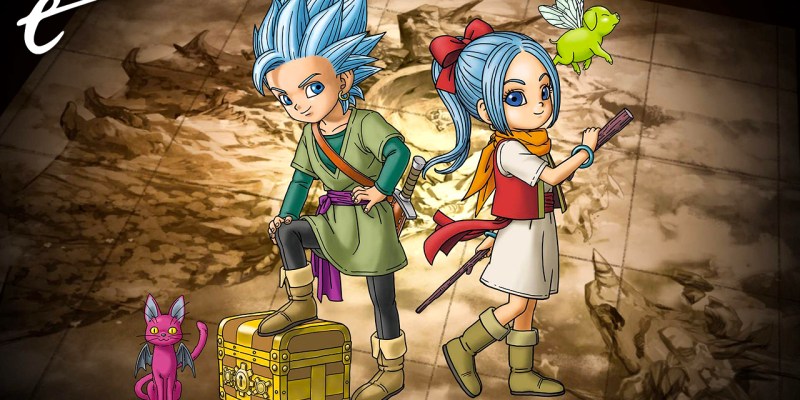Dragon Quest Treasures was almost definitely created for Japanese schoolchildren. It was also created as a love letter to longtime Dragon Quest fans. But if you’re neither of those things, there’s still a surprisingly high chance that you’ll enjoy this game. Square Enix and Tose have crafted an unexpectedly addicting and fun action adventure of treasure and monster collection that you can enjoy for 20 minutes or hours at a time on Nintendo Switch. Despite an odd design decision or two, Dragon Quest Treasures cleans up pretty nicely in review.
Treasure Hunting Is the Whole Game
The premise of Dragon Quest Treasures is that young orphaned siblings Erik and Mia get sucked out of their world and dropped into a series of floating islands. These islands are packed with extraordinary amounts of treasure, and conveniently, almost everyone who lives here is also a treasure hunter. Even more conveniently, Erik and Mia are already obsessed with treasure hunting in the first place, so the entire game is an excuse for people to go on epic treasure hunts. There’s danger involved, but the quests are wholesome and no one is trying to kill anybody, including the monsters you fight.
Technically, this game is a prequel to Dragon Quest XI, as Erik and Mia feature prominently in that game as adults. But in practice, the story here is paper-thin and largely inconsequential. That’s not to say it’s bad though. Treasures is stuffed with the signature Dragon Quest charm, with colorful and funny localization choices in the dialogue and (sparse) voice acting. Paired with distinctive and funny animations, (I just loved watching sentient hand monsters wave as a train departs from the station.) the characters are a joy even if you can’t remember their names.
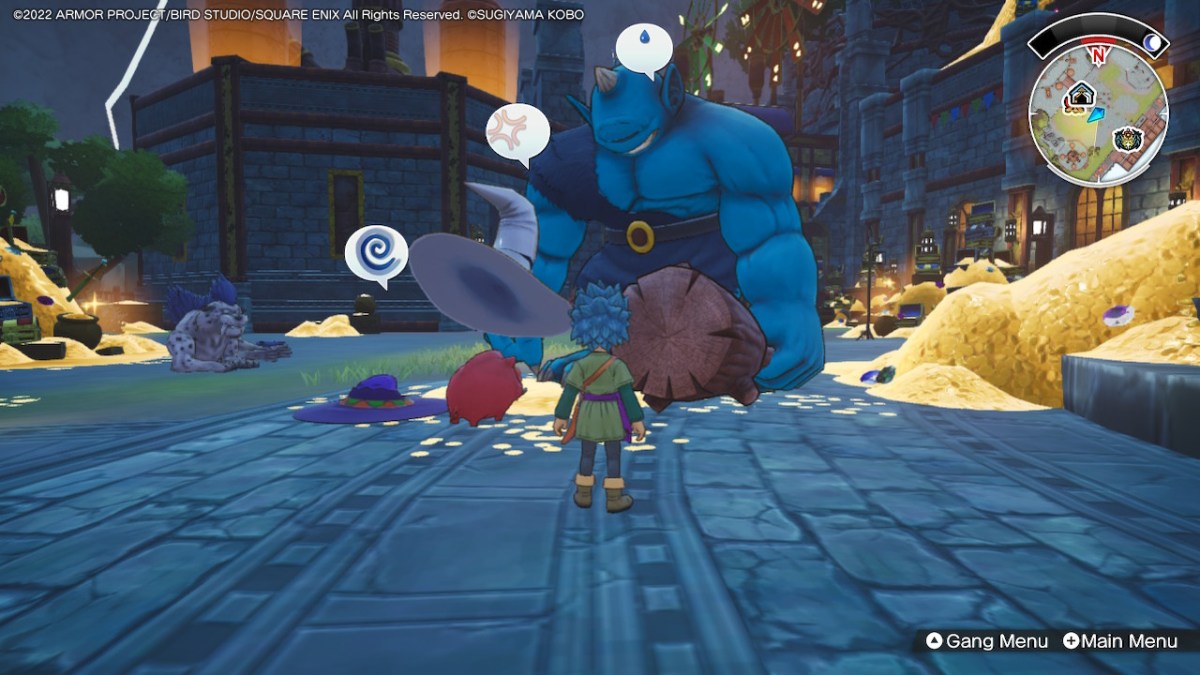
For a Nintendo Switch game, Dragon Quest Treasures looks pretty solid visually. You’ll never trick yourself into thinking you’re playing on a stronger platform, but the draw distance is adequate and the art design is strong. Each of the five main islands you’ll explore has distinct geography and a good amount of verticality, enticing players to explore every nook and cranny for surprises.
Meanwhile, since most of the characters in the game are monsters, the large majority of the character models are imported (figuratively, at the very least) from the rest of the franchise. That means they all look great, even when some of them are effectively just color swaps. I particularly adore how the game preserves a sense of scale with monsters. A Golem or a Gigantes looks absolutely massive next to other characters — which makes it even more fun when you have one in your party.
Lastly, the soundtrack of Dragon Quest Treasures is fantastic. I hummed along with the music so much that I started to get annoyed with myself. The credits attribute the soundtrack to the late Koichi Sugiyama, the main composer for the franchise, which would make this quite the high note to end on. It is smaller in scope than the soundtrack to Dragon Quest XI, but the quality level is higher.
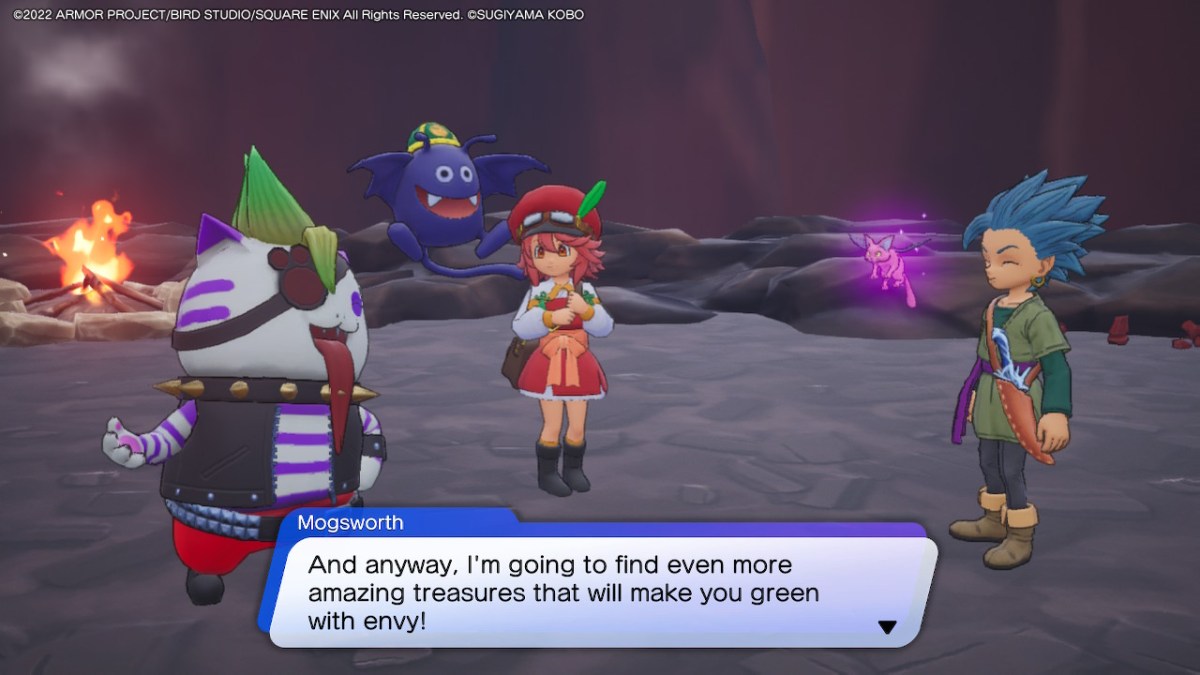
Exploration Is Delightful in Dragon Quest Treasures
The core gameplay loop of Dragon Quest Treasures is straightforward and addictive: You go to an island, you retrieve randomly spawned treasure while doing other quests, and you bring that treasure back to base to be appraised. Overall, it’s executed quite well across several fronts.
For starters, after the short opening segment of the game, you can go to any island you want, whenever you want by train. (You can also swap between playing as Erik or Mia whenever you want back at base.) All islands start with low-level monsters roaming around in close proximity, but as you explore, you’ll quickly find higher-level enemies. It’s up to you if you want to risk exploring dangerous territory, but the game makes it fairly easy to physically run away from enemies.
In Dragon Quest Treasures, you always play as Erik or Mia, but the rest of your four-character party consists of monsters you recruit. There is a chance whenever you beat a monster out in the field that it will decide to go to your base for recruiting. If you can pay its fee (which involves crafting materials found during exploration), then it joins your treasure hunting team. Collecting monsters is at least as addicting as collecting treasure, and it’s fun for its own sake. But there are also good reasons to develop a large, diverse team of monsters.
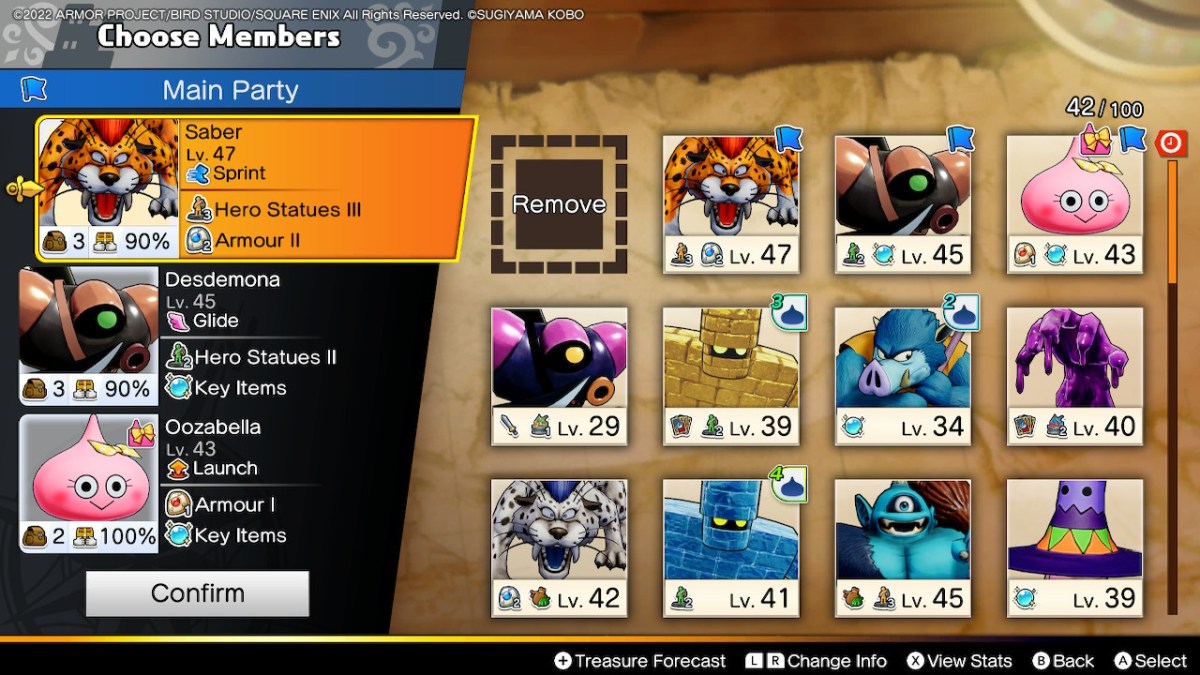
Firstly, each monster has one of a few exploration abilities, like giving you a big vertical jump or allowing you to glide. Some abilities are required to reach certain areas. On one hand, this adds strategy to party selection, but on the other hand, you can only change your party back at base — so it can be pretty annoying to discover something you can’t actually explore with your current party.
Monsters also have specific treasure hunting aptitudes, being able to find certain types of treasure easier than others. Each island has its own shifting “weather report” of sorts for available treasure, and you want to bring monsters that match the type of treasure currently available. This is also true when sending teams of monsters off on their own side missions to the islands to collect more treasure and crafting materials. It’s a clever system, but I wish the game had options to just auto-complete team compositions that best satisfy the current “treasure weather.” Going through menus to select monsters gets a little tedious.
As for the actual treasure hunting, it too is simple. You can activate a command that tells you the general direction of the closest treasure on an island. Once you get really close, you can activate another ability that gives you snapshots of where a treasure is — but from the viewpoint of your monsters (who often have obscured vision, for practical or funny reasons). When you’re close enough, the ground will glow and you can just hold the A button until you finally dig up your new treasure. Or alternatively, there is lousier but easily found treasure that will just present itself to you while exploring, which is better than nothing.
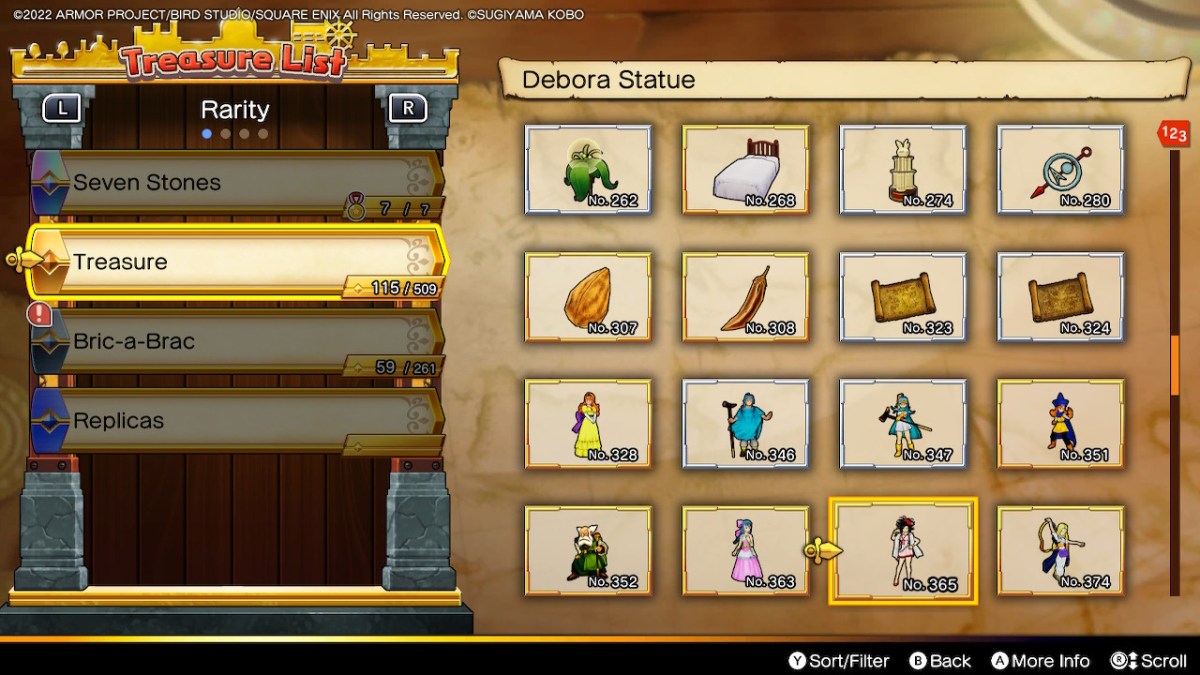
Regardless, you have to take treasure back to base to see what it actually is and get its value recorded. The treasure is frankly amazing in Dragon Quest Treasures, in that there are hundreds upon hundreds in total, all with their own 3D models and all pulled from across the entire game franchise. It must have been an enormous undertaking to, for instance, convert the heroes and villains of practically every major Dragon Quest game into individual statues you can collect as treasure. Heck, just converting so many signature swords, shields, and armors into 3D models must have been a bear.
Even better, you can choose a few pieces of treasure to display at any time, so I opted to display massive statues of boss enemies from Dragon Quest V and VII. It feels like a fantastic celebration of the franchise, and even if you don’t know Dragon Quest, you’ll probably appreciate the attention to detail.
The point of collecting treasure is that, once you hit specific value thresholds, your treasure hunting team levels up and can expand its facilities and other things. However, the main narrative mostly only demands that you collect seven specific treasures, the “dragonstones,” in order to reveal a long-lost final land. You can collect the dragonstones and complete the game in about 20 hours, but there are dozens of hours of additional quests and treasure hunts where that came from.
You can even go online with Dragon Quest Treasures to hide treasure for other players to find, but I was unable to test this functionality during the review period.
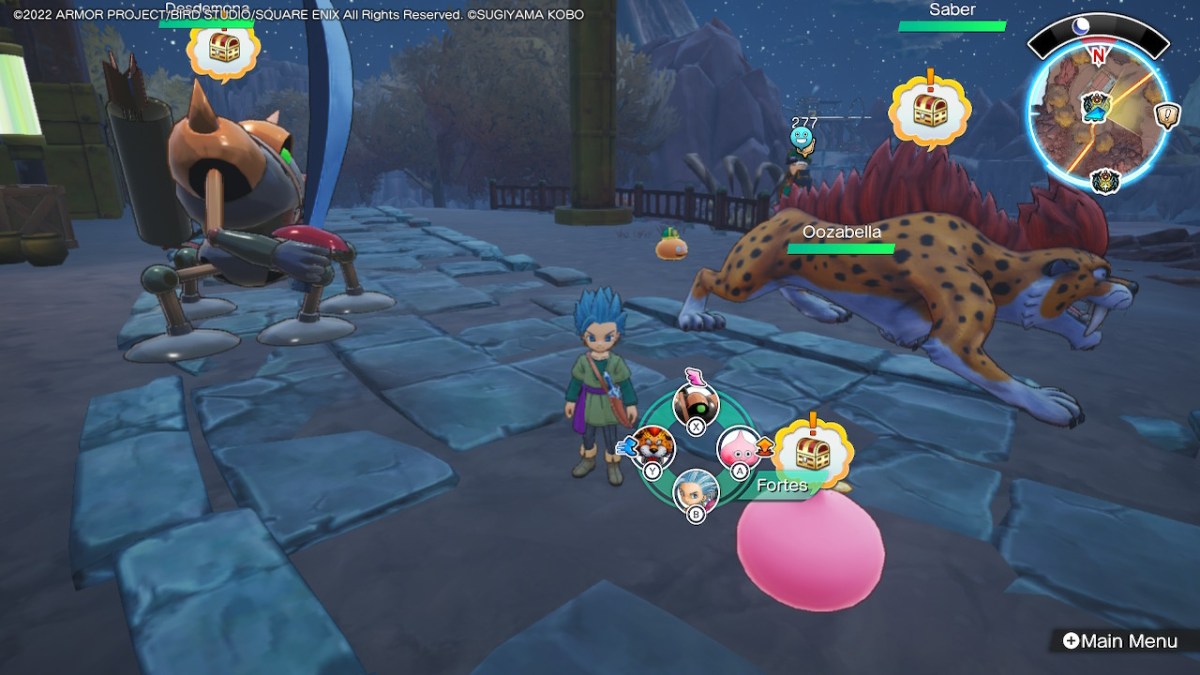
The Action Combat Is Bizarre
The combat system is the biggest head-scratcher of Dragon Quest Treasures. Ostensibly, the game is an action RPG, but it’s extremely uninterested in battles compared to exploration. You only ever control Erik and Mia, who can do a basic slash attack, fire a slingshot, occasionally activate a super mode for stronger slash attacks, or use MP to pretty exclusively heal their own HP or revive a dead party member. Your monsters attack and use their special abilities on autopilot, and they will attack anything in your general vicinity; if you don’t want to fight, you’ll have to mash a specific button repeatedly while running away in order to make them stop.
You will collect or craft lots of different types of slingshot ammo that let you hurt or debuff enemies or heal or enhance allies. Being a mindless item hoarder, I refrained from using much slingshot ammo outside of boss fights. But even if you use the slingshot as it’s intended — as the key driver of strategy — it’s still not nearly as interesting as if the game had just let you control the monsters directly. Combat is frankly just kind of weird and boring, especially since there is seldom good reason not to just mash the attack button anyway. You can collect and equip medals to further enhance your team’s stats, but again, it’s nothing exciting.
It doesn’t help that rival treasure groups will appear at random intervals (after some on-screen warnings) to attack you during treasure hunts, hurting the game pacing and discouraging especially long hunts. Fortunately, you can save anywhere at least. Also, the game rewards tons of experience for finding treasure, so you can ignore many battles and still level up at a healthy rate.
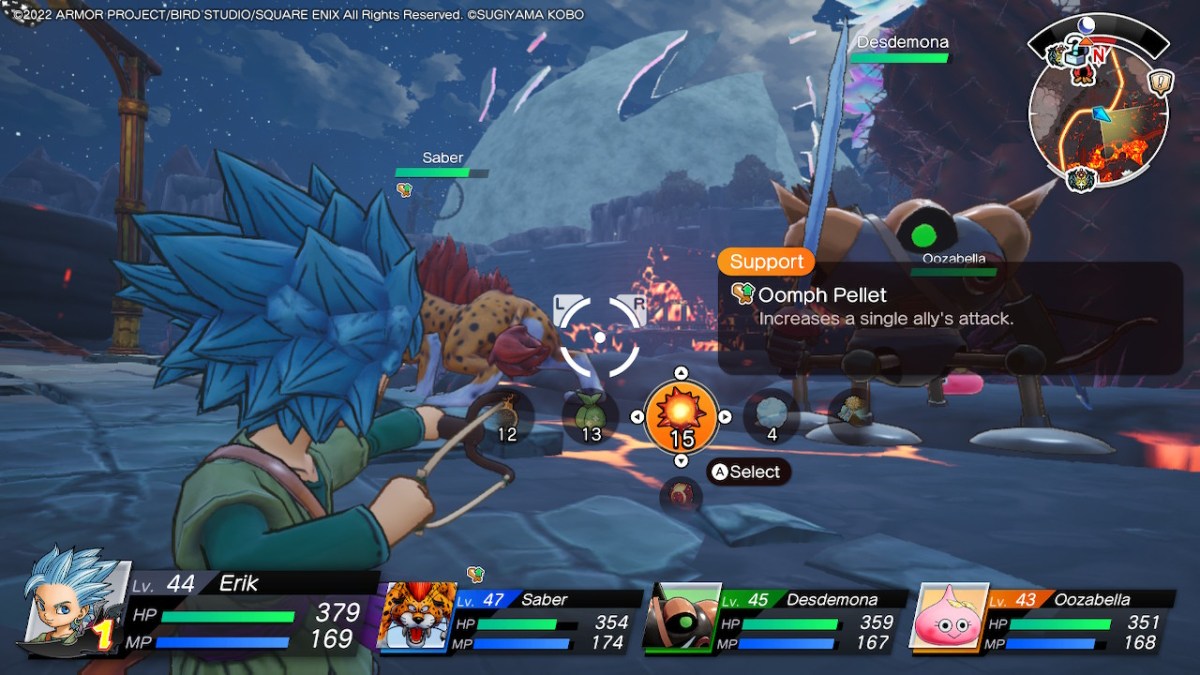
The Review Verdict on Dragon Quest Treasures
Dragon Quest Treasures is some of the most fun I’ve had just exploring a game world all year, between its great world design and excellent soundtrack. This treasure hunt is a delight for players of all ages and one of the more unique experiences I’ve had on Switch in recent memory. The strange combat system will disappoint some, but if you can just get over that and a few other little quirks, this is an adventure well worth taking.
A Nintendo Switch review code for Dragon Quest Treasures was provided by the publisher.
